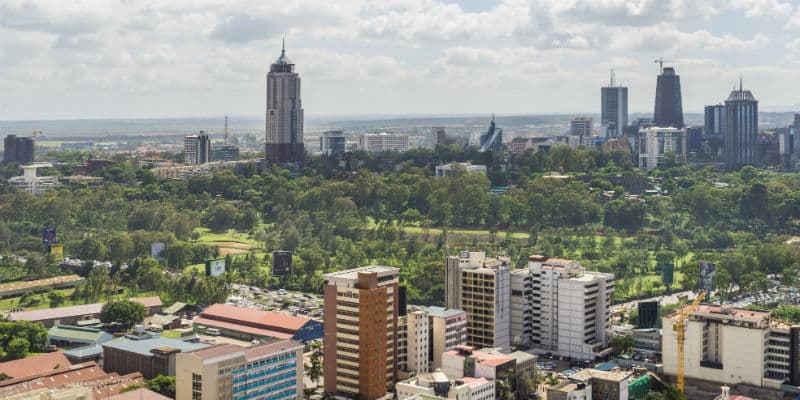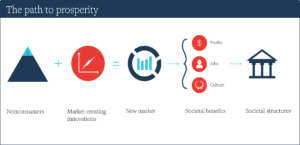After Kenya’s Supreme Court decided to annul the result of the August 8th Presidential election due to voting irregularities, many Kenyans rejoiced. And even though the incumbent President, Uhuru Kenyatta, won both the first election and the re-run, many considered the Supreme Court’s decision as evidence of progress in the march towards a more representative democracy.
On November 1st, I published a blog with a different perspective, suggesting that we might be focusing too much on the results of the elections. For the average Kenyan who lives in a country with a GDP per capita that is less than $1,500 and a life expectancy of 62 years, elections may not matter as much as we think. What matters most is how to increase their level of prosperity—with or without the help of the government—in order for Kenyans to get a chance at better education, health, infrastructure, and alas even better governance. It is counterintuitive, and several people who read my blog took offense to the message, suggesting that I reduced a complex development problem by providing an overly simplified solution: innovation.
What I realized, however, is that there is little difference in principle between my views and the views expressed by those who disagreed with the piece. The thing that was missing in our communication was a common language to help us better understand and perhaps simplify the complexity of economic development. I hope this piece helps create a common language that we can improve upon over time in order to reduce confusion.
The path to prosperity
There is a predictable pattern to long-term and sustainable economic development that can be explained by the image below.
First, we have nonconsumers. They are people who typically cannot afford existing solutions on the market. They are usually economically poor and underskilled. Virtually every society in the world, if you go back far enough, was once filled with nonconsumers—of education, healthcare, food, transportation, leisure, good governance, and so on. When the majority in a society are poor, their governing bodies hardly take into consideration their rights and struggles. Sometimes, they simply do not have the resources to provide good governance, and other times they do not have the incentives to do so. The World Bank’s Worldwide Governance Indicators’ rankings confirms this. Poor-country governments have a hard time providing good governance services. We must remember that Europe was once ruled by ruthless monarchs who waged war against one another and killed at will. The question then becomes, how did some countries develop good governance that now incentivizes innovation, markets, and the rights of their citizens?
The second component in our model, market-creating innovations, provides an answer. These are innovations that target nonconsumers by transforming complex and expensive products into simple and affordable ones, thereby making them affordable and accessible to many more people in society. These innovations create new markets that provide jobs, profits for investors and the governments, and most importantly begin to change the culture of society. It is important to note that the circumstances and environments under which these market-creating innovations are developed are hardly welcoming or conducive for them to grow. But the innovations are able to succeed because of the courage and vision of the entrepreneurs, and because they create such vibrant markets that the development calculus of the region changes.
Once these new markets are developed, the governments, all of a sudden, see the benefits and are thereby incentivized to develop better and better institutions that can promote more innovation and economic development. Since they now benefit from the outputs of the market in form of taxes, jobs for citizens, and less crime and higher productivity, the incentive to build and maintain these institutions is quite strong. Harvard University’s Robert Bates notes as much in his book, Prosperity and Violence, when he writes, “Economic growth led to increased demands for an official system of justice and a willingness to pay for it. The court fees collected by the king more than covered the costs of the legal system, and fees from the provision of justice soon grew into a major source of government revenues.”
So, it is not enough to wish for, hope for, and pray for good governance. We must figure out how to pay for good governance. That is what every wealthy country today did. Good governance is expensive and it is the output from markets—jobs, profits, and a fundamental change in culture—that pay for it. These markets, however, are often developed in the most unlikely of circumstances.
In development discourse and certainly in the industry’s expenditures, conventional wisdom suggests that good governance is an input to the economic prosperity creation equation. On the surface, it makes sense. Better governance and institutions will lead to more investments which will lead to better innovations and better jobs. And so on. But as sensible as this thinking is, it isn’t quite the way things work. And we are concerned with the way things work, not the way we want or think things should work.
The solution to Kenya’s troubles, and any other low to middle-income country’s troubles for that matter, is neither Kenyatta nor Odinga, the main opposition candidate. The solution is prosperity through investments in market-creating innovations.




